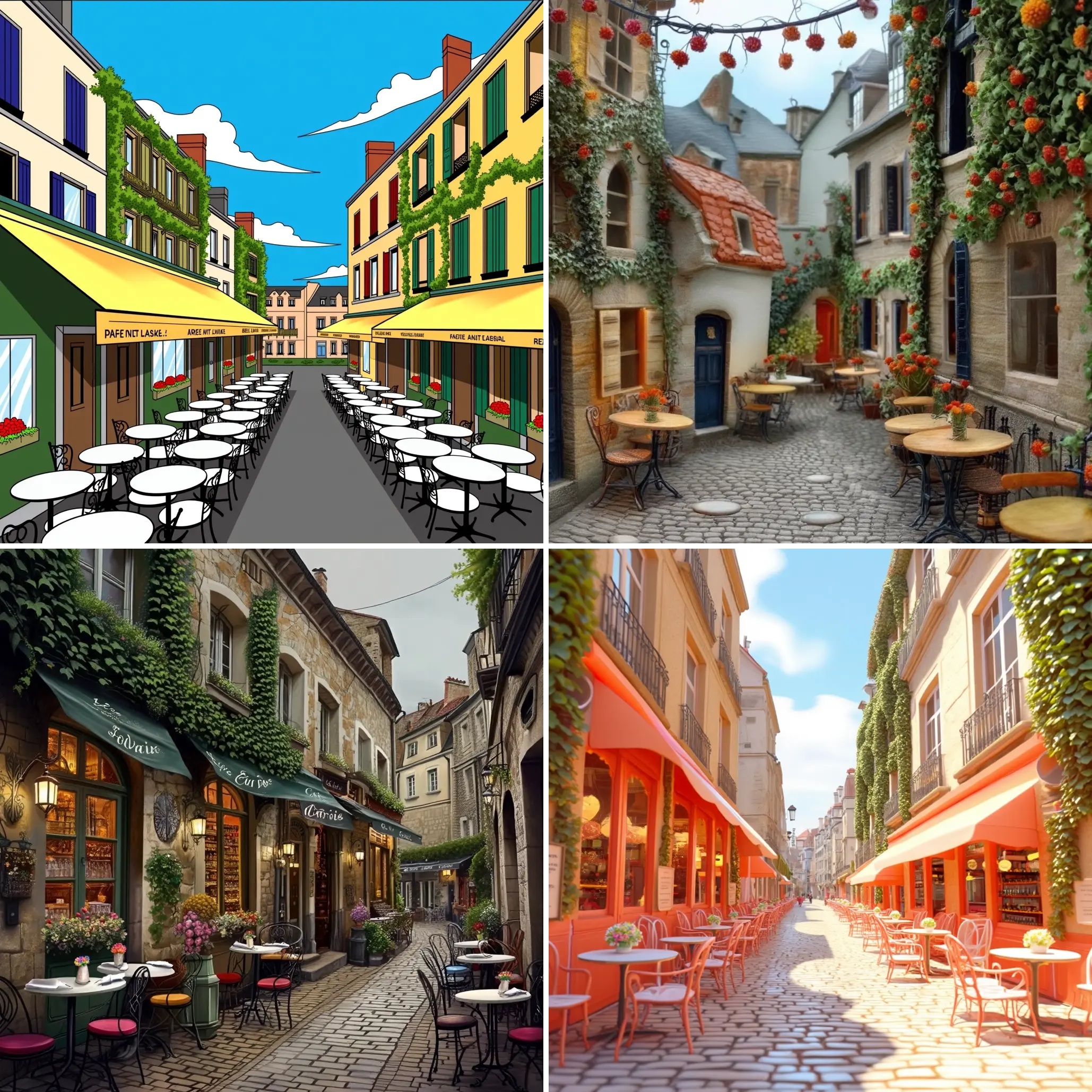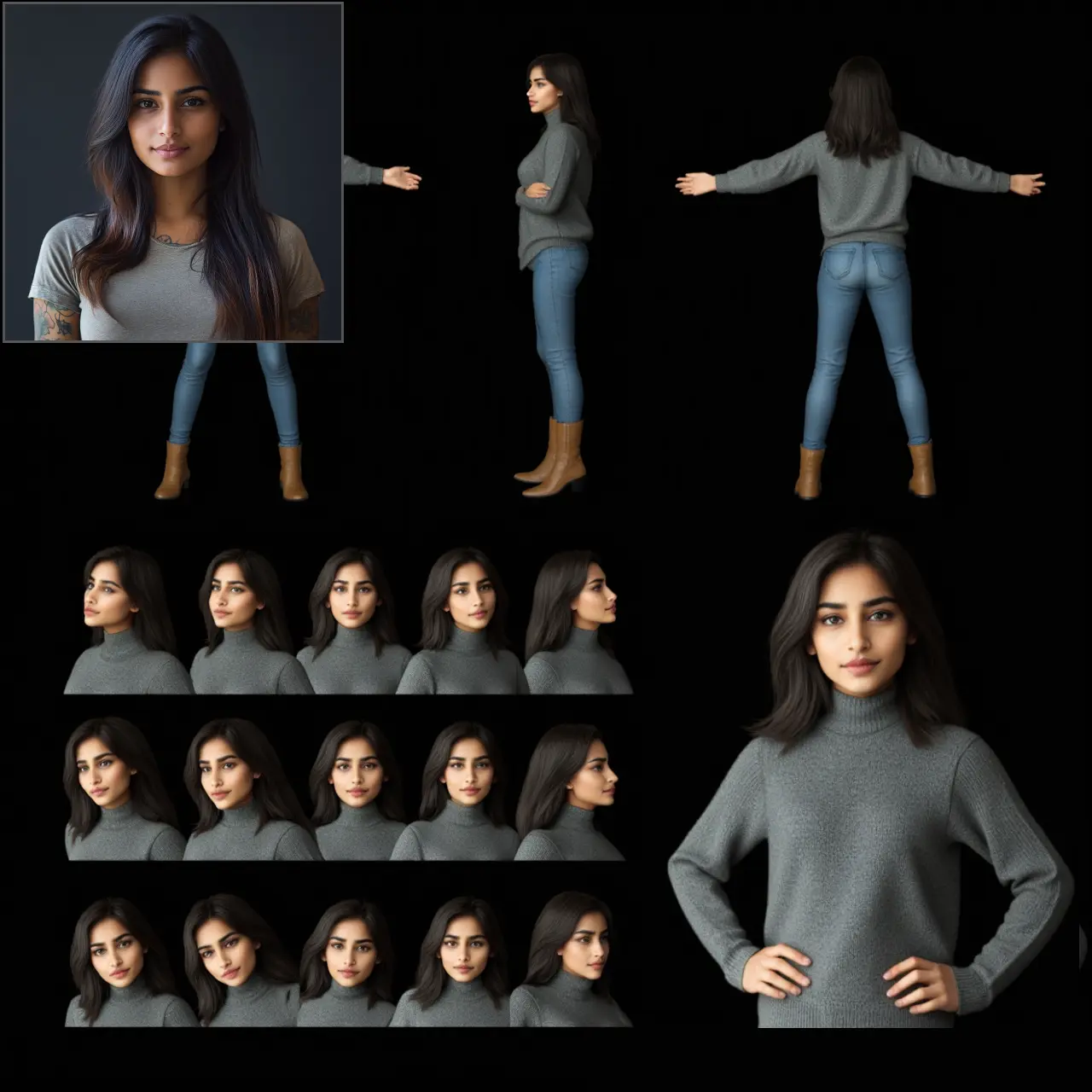ComfyUI Node: Latent Tile Sampler Custom (Mikey)
MikeyLatentTileSamplerCustom
CategoryMikey/Sampling
bash-j (Account age: 4472days) Extension
Mikey Nodes Latest Updated
2025-03-22 Github Stars
0.14K
How to Install Mikey Nodes
Install this extension via the ComfyUI Manager by searching for Mikey Nodes- 1. Click the Manager button in the main menu
- 2. Select Custom Nodes Manager button
- 3. Enter Mikey Nodes in the search bar
Visit ComfyUI Online for ready-to-use ComfyUI environment
- Free trial available
- 16GB VRAM to 80GB VRAM GPU machines
- 400+ preloaded models/nodes
- Freedom to upload custom models/nodes
- 200+ ready-to-run workflows
- 100% private workspace with up to 200GB storage
- Dedicated Support
Latent Tile Sampler Custom (Mikey) Description
Resamples large latent images into smaller tiles for efficient processing while preserving quality and details.
Latent Tile Sampler Custom (Mikey):
The MikeyLatentTileSamplerCustom node is designed to handle and process latent images that are larger than a specified tile size by resampling them. This node is particularly useful for AI artists who work with high-resolution images and need to manage large latent spaces efficiently. By breaking down the latent image into smaller, more manageable tiles, the node resamples each tile individually and then stitches them back together to form the final upscaled latent tensor. This approach ensures that the quality and details of the image are preserved while optimizing the processing time and computational resources. The MikeyLatentTileSamplerCustom node is essential for tasks that require high-resolution outputs without compromising on performance.
Latent Tile Sampler Custom (Mikey) Input Parameters:
model
The model parameter specifies the AI model to be used for resampling the latent tiles. This model is responsible for generating the new latent representations for each tile. The choice of model can significantly impact the quality and style of the final image. There are no specific minimum or maximum values for this parameter, but it should be a valid AI model compatible with the node.
add_noise
The add_noise parameter determines whether noise should be added to the latent tiles during the resampling process. Adding noise can help in generating more diverse and creative outputs. This parameter typically accepts boolean values: True to add noise and False to skip adding noise. The default value is usually False.
noise_seed
The noise_seed parameter sets the seed for the random noise generator. This ensures that the noise added to the latent tiles is reproducible. The seed value can be any integer, and using the same seed will produce the same noise pattern, which is useful for consistency in results. There are no specific minimum or maximum values, but it should be a valid integer.
cfg
The cfg parameter stands for configuration settings that control various aspects of the resampling process. These settings can include parameters like learning rate, number of iterations, and other hyperparameters. The exact configuration options depend on the model being used. There are no specific minimum or maximum values, but it should be a valid configuration dictionary.
positive
The positive parameter is a set of positive prompts or conditions that guide the resampling process. These prompts help in steering the model towards generating desired features in the latent tiles. The parameter can be a list or dictionary of prompts. There are no specific minimum or maximum values, but it should be a valid set of prompts.
negative
The negative parameter is a set of negative prompts or conditions that the model should avoid during the resampling process. These prompts help in preventing unwanted features in the latent tiles. Similar to the positive parameter, it can be a list or dictionary of prompts. There are no specific minimum or maximum values, but it should be a valid set of prompts.
sampler
The sampler parameter specifies the sampling method to be used for resampling the latent tiles. Different sampling methods can produce different styles and qualities of outputs. The parameter should be a valid sampling method compatible with the model. There are no specific minimum or maximum values.
sigmas
The sigmas parameter represents the standard deviations used in the noise addition process. These values control the amount of noise added to the latent tiles. The parameter can be a list or array of sigma values. There are no specific minimum or maximum values, but it should be a valid set of sigma values.
latent_image
The latent_image parameter is the input latent image that needs to be resampled. This image is typically larger than the specified tile size and will be broken down into smaller tiles for processing. The parameter should be a valid latent image tensor. There are no specific minimum or maximum values.
tile_size
The tile_size parameter specifies the size of the tiles into which the latent image will be split. This size determines how the latent image is divided and processed. The parameter should be an integer representing the tile size. There are no specific minimum or maximum values, but it should be a valid integer.
Latent Tile Sampler Custom (Mikey) Output Parameters:
latent
The latent parameter is the output latent image after resampling. This image is formed by stitching together the resampled tiles, resulting in an upscaled latent tensor. The output retains the quality and details of the original image while being optimized for performance. The parameter is a latent image tensor.
Latent Tile Sampler Custom (Mikey) Usage Tips:
- To achieve the best results, choose a model that is well-suited for the type of image you are working with. Experiment with different models to find the one that produces the desired quality and style.
- Adjust the tile_size parameter based on the resolution of your input latent image. Smaller tile sizes can help in managing memory usage and processing time, but may require more computational resources.
- Use the noise_seed parameter to ensure reproducibility in your results. This is particularly useful when you need consistent outputs for comparison or further processing.
- Experiment with different positive and negative prompts to guide the resampling process. This can help in achieving specific features or avoiding unwanted elements in the final image.
Latent Tile Sampler Custom (Mikey) Common Errors and Solutions:
"Invalid model specified"
- Explanation: The model parameter provided is not a valid AI model compatible with the node.
- Solution: Ensure that you are using a valid and compatible AI model. Check the documentation for the list of supported models.
"Tile size must be a positive integer"
- Explanation: The tile_size parameter is not a valid positive integer.
- Solution: Verify that the tile_size parameter is set to a positive integer value. Adjust the value accordingly.
"Noise seed must be an integer"
- Explanation: The noise_seed parameter is not a valid integer.
- Solution: Ensure that the noise_seed parameter is set to a valid integer value. Adjust the value accordingly.
"Invalid configuration settings"
- Explanation: The cfg parameter contains invalid configuration settings.
- Solution: Check the configuration settings in the cfg parameter and ensure they are valid for the model being used. Refer to the model's documentation for the correct settings.
Latent Tile Sampler Custom (Mikey) Related Nodes
RunComfy is the premier ComfyUI platform, offering ComfyUI online environment and services, along with ComfyUI workflows featuring stunning visuals. RunComfy also provides AI Playground, enabling artists to harness the latest AI tools to create incredible art.




